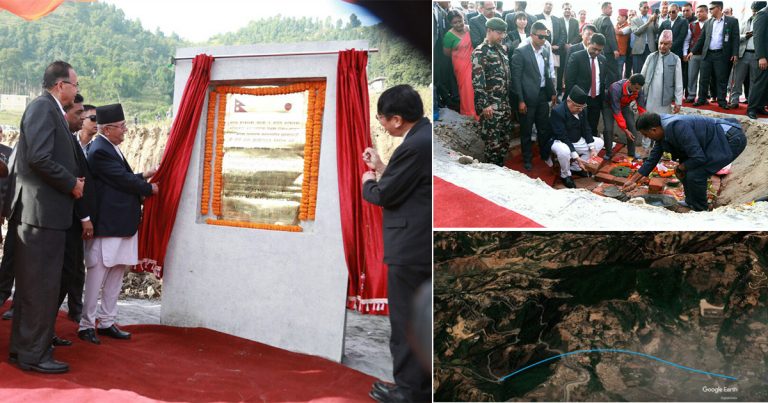
For those leaving from or arriving into Kathmandu via the Prithvi Highway, there is always a nagging thought – what kind of traffic will I experience from Nagdhunga to Naubise? The 12.6 km stretch is notorious for its long traffic queues – personally, I have crossed the stretch between 20 mins to 4 hours, yet again, I have heard people have spent beyond 8 hours too. The notoriety was further highlighted just ahead of the Dashain season – where the government had to ban trucks during the period after long traffic queues contributed towards the death of an ailing patient.
To solve this problem, a solution was sought – in the form of a tunnel from Nagdhunga to Sisnekhola. Yesterday, it’s foundation stone was laid by PM Oli. Talking to the media, he said the occasion marked Nepal’s yet another step towards progress. He also assured the people that the project would be completed on time.
Here are a few facts about the project:
- The tunnel is going to be 2.69 km long from Basnet Chhap near Nepal Oil Corporation’s depot near Nagdhunga to Sisne Khola, Naubise.
- The project is estimated to cost Rs 22 billion – 16 billion will be provided in the form of Official Development Assistance Loan (o.01 percent) by Japan International Cooperation Agencies and the remaining will be managed internally. ODA loans support developing countries by providing low-interest, long-term and concessional funds to finance their development efforts.
- The deadline to complete the project is four years – the Department of Roads plans to complete the project by 2021. Given the project was slated to begin in March, a slight delay can be expected.
- The project is going to be Nepal’s first motorable tunnel, and also includes two small flyovers.
- An estimated 16,000 vehicles enter/exit Kathmandu via the Nagdhunga-Naubise road, and is one of Nepal’s biggest bottleneck traffic jams – the project aims to solve the problem.
- JICA is providing financial and technical assistance towards the tunnel construction. According to JICA, the project is not likely to have significant adverse impact on the environment. An agreement on the construction of the tunnel road was signed Japanese Company Hazama Ando Corporation on September 23.
- The tunnel will be state of the art, and in consistency to Japanese standards – LED illuminated roads, mechanical ventilation, evacuation tunnel, emergency telephone service, and ‘Continuous Monitoring System’ of the road condition has been designed and will be implemented.





